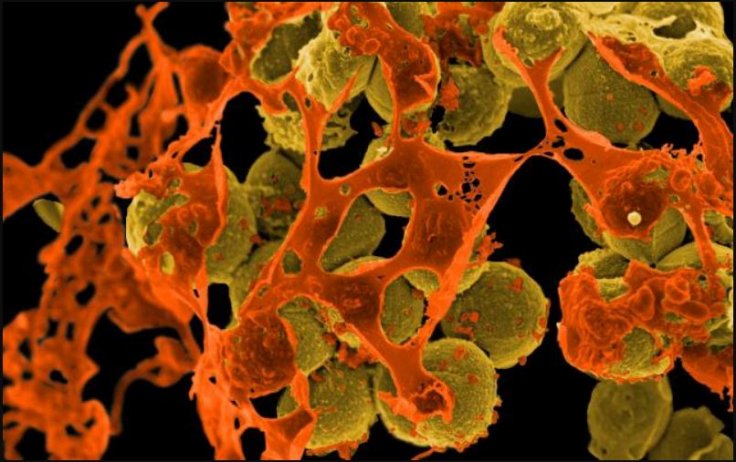A study led by scientists from the University of Notre Dame and Emory University has found that a compound that is naturally found in the leaves of a common shrub known as the American beautyberry, can boost an antibiotic's action against antibiotic-resistant staph bacteria.
Their experiments demonstrated that the compound found in the plant, works along with oxacillin to counter the resistance of the methicillin-resistant Staphylococcus aureus (MRSA). Cassandra Quave, the co-senior author of the study, said in a statement, "We decided to investigate the chemical properties of the American beautyberry because it was an important medicinal plant for Native Americans."
Reliance on its Medicinal Properties by Native Americans

The American beautyberry, or Callicarpa americana, is native to the southern United States. Prolific in the wild, the shrub is also popular in ornamental landscaping. It's known for showy clusters of bright purple berries that begin to ripen in the summer and are an important food source for many species of birds. Micah Dettweiler, a recent Emory graduate and a staff member of the Quave lab, is the first author of the study. Christian Melander, professor of chemistry at Notre Dame, is co-senior author.
The Alabama, Choctaw, Creek, Koasati, Seminole and other Native American tribes relied on the American beautyberry for various medicinal purposes. Leaves and other parts of the plant were boiled for use in sweat baths to treat malarial fevers and rheumatism. The boiled roots were made into treatments for dizziness, stomachaches and urine retention, while bark from the stems and roots were made into concoctions for itchy skin.
Previous research found that extracts from the leaves of the beautyberry deter mosquitoes and ticks. And a prior study by Quave and colleagues found that extracts from the leaves inhibit the growth of the bacterium that causes acne. For this study, the researchers focused on testing extracts collected from the leaves for efficacy against MRSA. "Even a single plant tissue can contain hundreds of unique molecules," Quave said. "It's a painstaking process to chemically separate them out, then test and retest until you find one that's effective."
Used by Plants to Ward of Predators

The researchers identified a compound from the leaves that slightly inhibited the growth of MRSA. The compound belongs to a group of chemicals known as clerodane diterpenoids, some of which are used by plants to repel predators. Since the compound only modestly inhibited MRSA, the researchers tried it in combination with beta-lactam antibiotics.
"Beta-lactam antibiotics are some of the safest and least toxic that are currently available in the antibiotic arsenal," Quave says. "Unfortunately, MRSA has developed resistance to them." Laboratory tests showed that the beautyberry leaf compound synergizes with the beta-lactam antibiotic oxacillin to knock down MRSA's resistance to the drug.
Synthesizing the Plant Compound
The next step is to test the combination of the beautyberry leaf extract and oxacillin as a therapy in animal models. If those results prove effective against MRSA infections, the researchers will synthesize the plant compound in the lab and tweak its chemical structure to try to further enhance its efficacy as a combination therapy with oxacillin.
"We need to keep filling the drug-discovery pipeline with innovative solutions, including potential combination therapies, to address the ongoing and growing problem of antibiotic resistance," Quave says. Each year in the U.S., at least 2.8 million people get an antibiotic-resistant infection and more than 35,000 people die, according to the Centers for Disease Control and Prevention.
"Even in the midst of the COVID-19, we can't forget about the issue of antibiotic resistance," Quave says. She notes that many COVID-19 patients are receiving antibiotics to deal with secondary infections brought on by their weakened conditions, raising concerns about a later surge in antibiotic-resistant infections.
(With inputs from agencies)
methicillin-resistant Staphylococcus aureus









